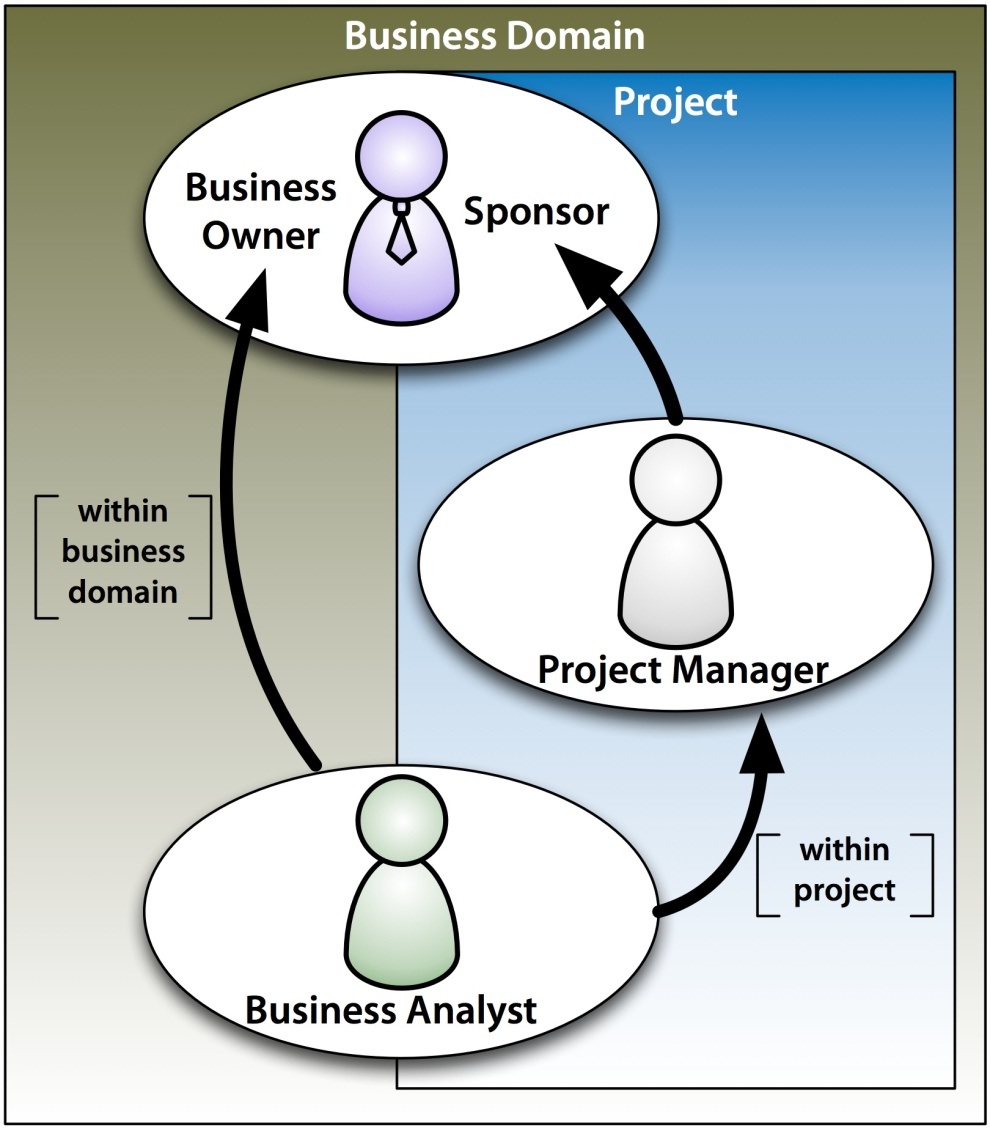"Would you tell me, please, which way I ought to go from here?"
"That depends a good deal on where you want to get to," said the Cat.
(Alice's Adventures in Wonderland, Chapter 6)
As a consultant I have visited many clients and trained scores of business analysts. The quote above sums up what I have often found to be the one of the biggest problems on projects and frankly, it scares the hell out of me.
Where are you going?
At the start of any project there needs to be a set of objectives, a “business need” as it is called in The Guide to the Business Analysis Body of Knowledge (BABOK). The BABOK says they should be SMART (see Section 5.1.4 for what the letters stand for). I feel that although these are good guidelines, there is an element that is missing. I see project objectives like “improve the customer experience”, “the system must be user friendly” or “a system to deliver 'xyz' service to clients”. Then the project team wonders why things go horribly wrong. These wishy washy objectives are a clear indication that the company has no idea what it wants, and the business analyst has no idea what he or she needs to deliver.
An objective that states “improve customer experience”, is like getting into a taxi and saying “I need to get to somewhere over there”, pointing madly in any direction. If you do not know where you are going, you will never know if you get there.
Business value
Business analysts need to understand their role on a project. Please note I use the word 'role' and not 'job' or 'the work we do'. As business analysts, our role is to deliver business value. If you do not have a clear definition of what that business value is, how can you expect to deliver it? “Improve the customer experience.” Where is the business value in that? And how do you measure it? When faced with objectives that are poorly defined, the business analyst is allowed to become like that irritating toddler, constantly asking “why? why? why? why? why?”. This is also known as the '5 Why' technique, for obvious reasons. Unless you understand what is wrong with the customer experience, and the financial gain that could be delivered by fixing it, you will be floundering around doing all sorts of things that do not solve the problem. You will spend a lot of time and effort for nothing.
In a white paper I collaborated on writing, “Partnering for Project Success: Project Manager and Business Analyst Collaboration©” (sponsored by PMI and IIBA), we developed the following diagram:
Communication Channels
Business Domain vs. Project

This diagram indicates that when a business analyst is working on a project, the [within project] arrow, all activities performed must be communicated to and with the PM. It is the next arrow that the business analyst really needs to understand. This is the arrow marked [within business domain]. What does that mean to the business analyst? This arrow relates to all communication regarding business value. When it comes to delivering the business owner’s desired business value the business analyst has a direct communication channel to that business owner. In simple terms, the business analyst role on any project is all about business value.
Thinking differently
One of my clients has set up a Centre of Excellence (COE) for business analysis. The culture of delivering business value became very strong within that COE. The business stakeholders started to understand and enjoy the business analyst’s role in helping them make or save money (business value). Then, something radical happened. Through pressure from the business stakeholders, the project team structure was changed. The business analyst was given overall responsibility for the project. The project manager was responsible for ensuring the project was conforming to the budget and time frames. The business stakeholder’s logic was if there was some piece of business value that was discovered later in the project that would delay the project, then the project plan needed to be changed. The business understood that the business analyst was the custodian of business value on the project. The business analyst could often show that the long-term benefits the newly discovered business value would deliver in most cases was far greater than the cost of a project over-run of a few months and the business analyst needed to be able to make that decision.
Business will value you
I trained a business analyst some time back who really understood her role in delivering business value to the business. I was chatting to one of her co-workers recently and she asked did I know that Jane had been promoted? (Names have been change to protect the innocent.)
“That’s nice,” I replied
“Yes, she became her boss’s boss,” said Jane's co-worker.
This promotion, I was told, was a result of the business recognising how important her role was in making or saving money.
In another instance, a student who was actually a business stakeholder was assigned to play the role of the business analyst on a project in his area of the business. The project had been approved with a large budget. He went through some training to learn what this business analysis thing was.
After completing the training, he had a rethink about the project. Coming from the business, he was able to quickly work out the benefits (business value) of the project. He set up a meeting with the business owner, and the business stakeholders.
He prepared three flip-charts. On the first he wrote the budget allocated to the project, so everyone could see it when the meeting started. Saying nothing, he then revealed the second page, which consisted of a break down of the individual benefit that could be derived on a monthly basis by the project. He had purposely not totalled these figures up.
Again saying nothing, he then revealed the third page. This contained the total saving over a three to five year period. The business owner looked at the numbers and simply said, “Well we are not doing that then”, and the meeting ended.
A solution recommendation by a business analyst can be, as in this case, do nothing. Sometimes it’s cheaper to live with the problem than fix it. It just like the little scratches or small dents we pick up on our car over time. We know that the cost of fixing them is far higher than the embarrassment of our car showing its age.
One thing I am always telling business analysts is that if you deliver business value, the business will begin to value you, as the cases above show.
Ask why?
A concern raised by some business analysts, especially juniors in large corporates, is how to ask business owners (who are quite senior in the organisation), “why are we doing this, what is the business value that will be derived?” I can understand where they are coming from, but I do not think it is unreasonable to ask someone in a business who is about to spend money, often huge amounts of money, what return they expect to make. Business is in the business of making money.
Governance: The cost of not complying
In governance-related projects the business analyst needs to ask a different question - not what return do you expect? But what is the cost of not doing this? There is often no financial gain but rather a huge cost that can be incurred if legislation and regulation are not adhered to. This cost can be in the form of fines or loss of business or even the closure of the business.
The business case
If a good business case has been completed this will often define the expected business value of the project. I am finding that many of my clients are now insisting on having a realistic business case and it is thus becoming more important to get project approval. In one client the business owner is responsible for proving that after a project has been delivered the business value identified in the business case was realised. The business community is more and more looking to the business analyst community to facilitate the process of business case development. The senior business analyst community needs to learn a new set of methods and techniques (see Chapter 5 of the BABOK). One of these is ensuring that a project has a clear objective. In other words, when you start your next project think of it as a taxi ride, make sure you know where you are going or you may not get there.
BABOK© is the “The Guide to the Business Analysis Body of Knowledge” from International Institute of Business Analysis (IIBA).
 Author: Robin Grace
Author: Robin Grace
Robin was collaborated on a White Paper titled “Partnering for Project Success: Project Manager and Business Analyst Collaboration” (IIBA® PMI® sponsored).
Robin has published a book titled, “Aligning Business Analysis, Assessing Business Analysis from a Results Focus”. Robin is a CBAP and the Principal Consultant BA Practice at IndigoCube South Africa.
Contact: [email protected]
About IndigoCube
IndigoCube enables and improves the productivity of key business processes. It specialises in the areas of business analysis, software development, software testing and application security. The application of best practices and the development of requisite skills is core to all its solutions and it partners with some of the world’s leading vendors. IndigoCube is ideally positioned to boost productivity and long-term return on investment in its focus areas. www.indigocube.co.za
Contact:
Robin Grace, IndigoCube, (011) 749 4950, [email protected]
Karen Heydenrych, Communikay, 083 302 9494, [email protected]